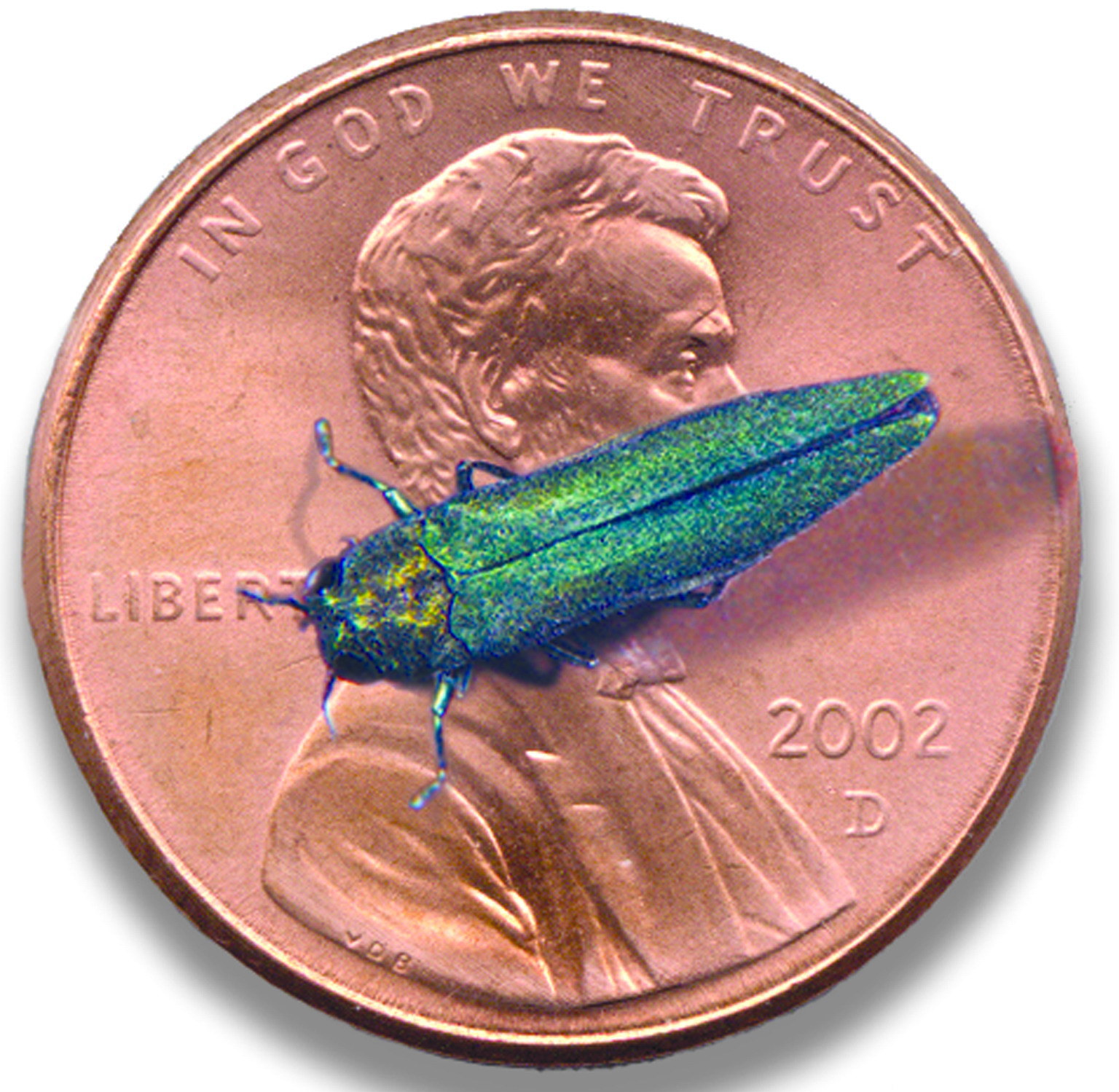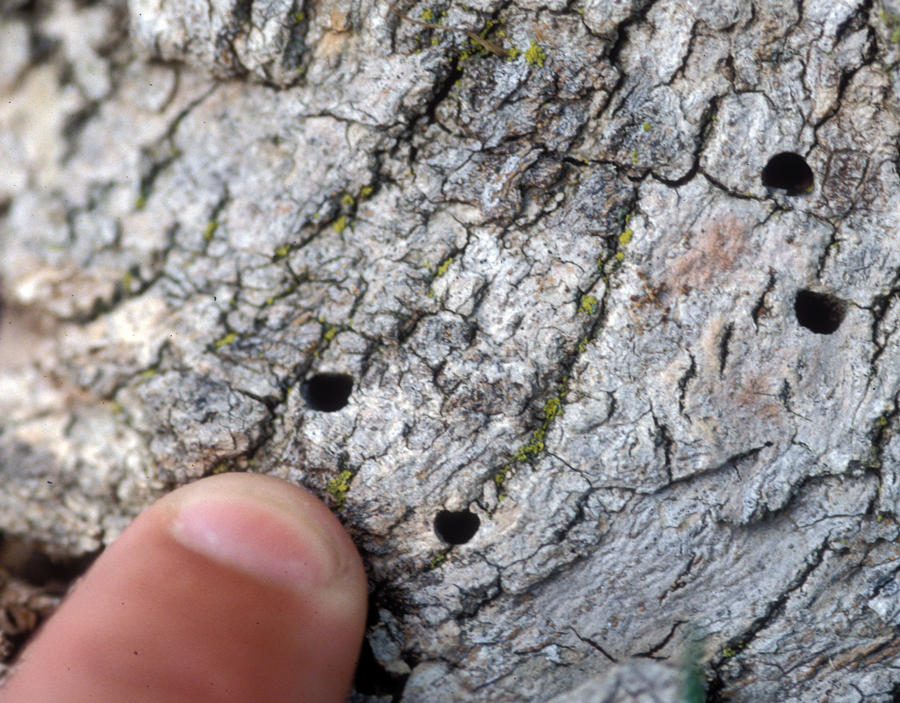Following post from Mr. Basketmaker himself…

Where are we now? The Hunt for the Last Black Ash Tree is on for real. And time is running out. Some experts say it’s a matter of five to ten years at the most, for the insects to reach your area and devour all the Black Ash Trees. While talking to Bob, The Splint Master, he believes it is closer to five years because of all the counties that are currently affected in the United States. Once it is in your county, you’re looking at 5 years the most. So what can anyone do? Let’s start by talking to Bob.
I asked Bob about his area of Michigan and how the ash trees were doing.
E: The ash supply you were getting, is it all gone?
BOB: Yes, it’s all gone.
E: Wow,. When you first saw the Emerald Ash Bores in the area you were getting your logs, how long did it take before the trees were dead?
BOB: It wasn’t long. Maybe 2 to 3 years.
I guess the point is, it’s a matter of how fast the insect can get to your area of Ash trees. It is believed that the invasive insect entered the US through the port of Detroit around 2002. It came from Asia, most likely China, in a shipping container. And lets take Bob’s situation—he lives almost directly straight across the state from Detroit. It took about 12-14 years for the insect to not only get there from Detroit, but to wipe everything out in his county. It’s here now for over a decade and a half and it already has a stronghold and only getting stronger and spreading faster. It is like a rolling stone that is catching more speed.
Now let’s talk about this bug.

First, I thought this was a good photo to show since I had no idea this thing was this small. Secondly, I’m not an entomologist but here is my understanding of this insect: The Emerald Ash Bore needs a host—and in comes the Ash tree.
Because of the huge density of Ash trees in North America, the insect exploded in large enough numbers to become unstoppable. The Emerald Ash Bore targets only Ash trees—White, Green, Blue, Black, etc. Why only Ash? I do not know the reason but it lays its larva under the tree’s bark. The insect bores holes through the bark and leaves larva trails that damage not only the bark, but the cambium layer as well. Both of these lead to the demise of the tree in just a few short years.

How does the insect travel?
Bob always would tell me “The rivers are their highways.”
Wow, I would think. There is no way of stopping that.
If you’re downstream, I’m assuming they arrive in your neighborhood a lot quicker. And even more devastating, the insect was studied further after it arrived in the states and it was found that they could fly up to five miles! There is no chance of stopping this invasive and destructive insect. The government has been quarantining counties for years now. It started in Michigan but expanded outward. You are no longer allowed to transport ash logs or cordwood from a quarantined county UNLESS the county you are bringing the ash logs to are also under a quarantine. (Got that?)
Bottom line—well, it’s sort of all pointless.
Like Bob always stated to me: “The Ash Bore doesn’t care about county lines.”
Now let’s take our hometown of McMinnville, Tennessee as an example. We just recently became a quarantined county. Black ash doesn’t grow this far south but the White Ash does. Like many old main streets similar to ours that are across America, the majestic Ash trees that line their streets will all be gone and will leave huge voids where they once were. Some cities are trying and have been using special treatments that they hope will keep them alive but this is very expensive to treat even one tree.
The Black Ash tree is the redheaded step child, so to speak, of the White Ash. Nonetheless, for basketmakers, it is going to be a great loss. For those that are basketmakers or those that have woven with the material, you know there is no substitute. There will never be one that can compare to Black Ash.
What I find ironic and disheartening at the same time is that Bob was the master of Black Ash splint and a tiny little bug from the other side of the planet was dropped in his back yard and killed his supply and is rapidly spreading out across North America. How does that happen?
Now where do I and other basketmakers go from here? There is only one option: Harvest whatever you can as fast as you can because the clock is ticking. And I am doing exactly that… I’ve already put my plan in motion and I am seeing some progress… so stay tuned for part three!
Source: Forestry Images, a source for forest health, natural resources and silviculture images operated by The Bugwood Network at the University of Georgia and the USDA Forest Service. Author Howard Russell, Michigan State University, Bugwood.org
OK, so this is what I don’t understand. Everyone keeps saying it is “so expensive to treat an ash tree”, which I think it is around $100 per year. Well, that does sound expensive if you think, “oh my I am going to have to keep doing that for years and years so it is going to add up.” But, if you go to replace a mature tree with something of any size, you are going to pay a small fortune. So, all of a sudden a $1,000 to treat your big shade tree for 10 years doesn’t sound like all that much. I realize nobody is going to go out in the swamp to treat black ash trees, but people who have them in their yards definitely could.
Thanks Tony. You are absolutely right! Well stated.
In your case Tony that makes sense. I know you only have one tree in your front yard, but what if you had 10?
I am not familiar with the Silver Ash. Maybe because I grew up in New England. Never have heard of it. I think the bottom line is, that Black ash really doesn’t grow in any quantity as far south as Ohio. Stay tuned Mary. I will be sharing more about the black ash processing in the next few weeks. Thank you for your interest.
My dad had two silver ash trees here in southeast Ohio. These trees fell sound like something messing with trash cans! Never found why they fell on their own either! Do they use silver ash for anything besides shade.